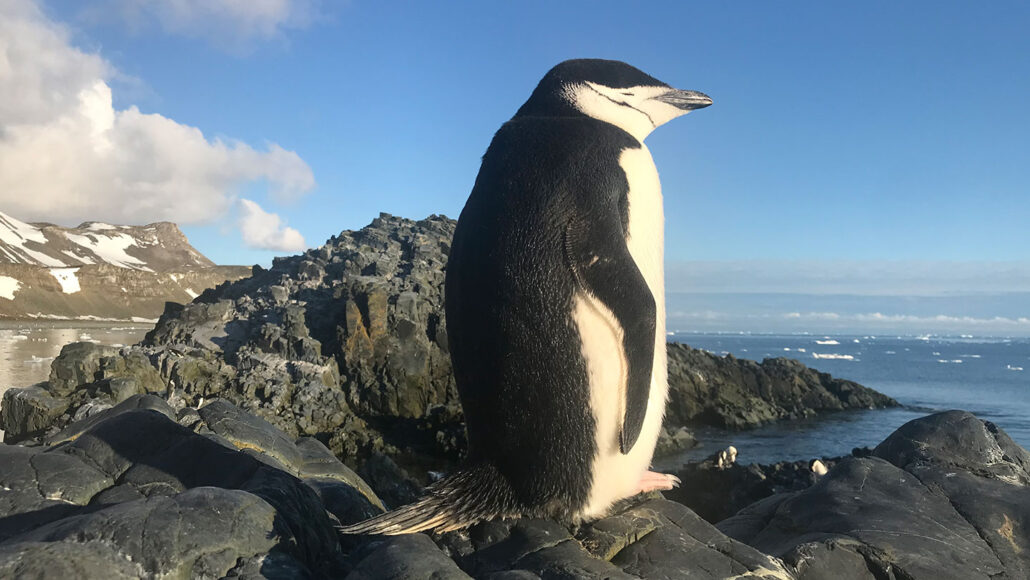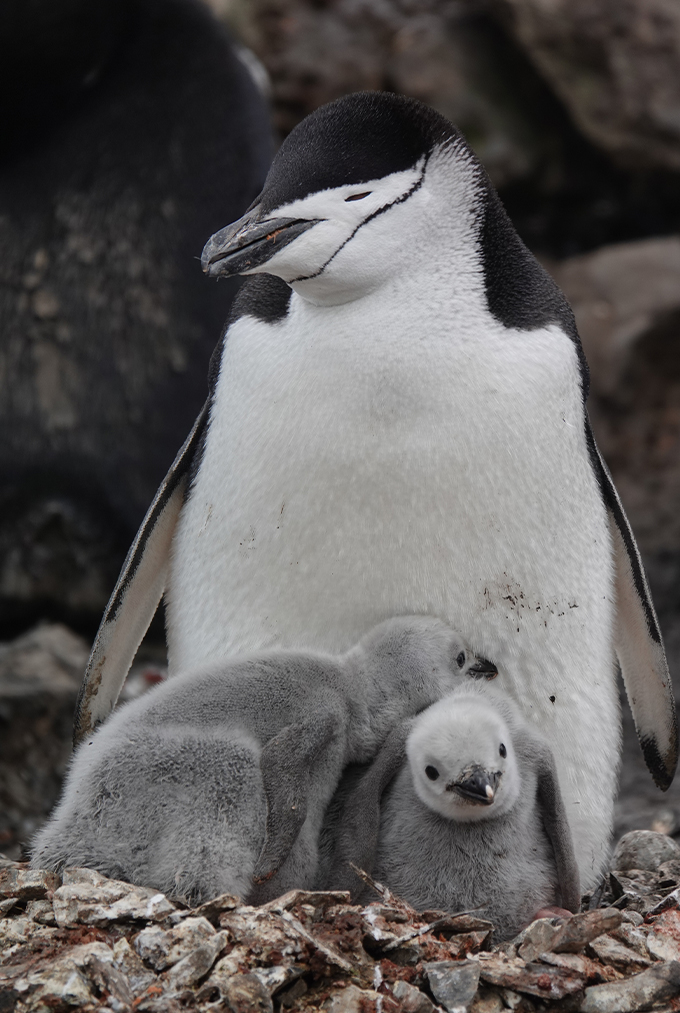These penguins nap 10,000 times a day, for seconds at a time
Such oodles of snoozes add up, providing more than 11 hours of actual shut-eye

A chinstrap penguin (Pygoscelis antarcticus) gets a few precious seconds of shut-eye on King George Island. It’s off the coast of Antarctica.
W.Y. Lee
By Jake Buehler
Nesting chinstrap penguins take nodding off to the extreme. These birds dip into slumber many thousands of times per day, sleeping only seconds at a time.
The penguins’ breeding colonies are noisy and stressful. Threats from predatory birds and aggressive neighboring penguins never seem to let up. But their extremely disrupted sleep schedule may help these penguins protect their young while still getting plenty of Zzzz’s.
Won Young Lee studies how animals’ habitats affect their behavior. He works at the Korea Polar Research Institute in Incheon. Nearly a decade ago, he noticed something odd about the sleep behavior of chinstrap penguins (Pygoscelis antarcticus) nesting on Antarctica’s King George Island. They seemed to doze for very brief periods.
Then, in 2018, Lee learned that some seabirds steal sleep while airborne on days-long flights. The next year, Lee teamed up with other researchers to investigate the chinstraps’ sleep.
They snooped on the daily slumbers of 14 nesting chinstrap penguins. The scientists mounted sleep-trackers on the birds’ backs, then surgically wired these to the birds’ brains. That allowed the gadgets to measure brain activity. Other instruments on the device recorded the penguins’ movements and location.
Nesting penguins had incredibly fractured slumber. They took more than 600 “microsleeps” an hour. Each nap averaged only four seconds. At times, the penguins slept with half of their brain; the other half stayed awake. But all these oodles of snoozes added up. The more than 10,000 brief sleeps each day provided more than 11 hours of sleep for each brain half.
The researchers shared their findings November 30 in Science.
Penguin power naps
The work adds to evidence that birds’ sleep can differ greatly from that of land mammals, says Jerome Siegel, who did not take part in the study. A neuroscientist, he works at the University of California, Los Angeles.
Some marine mammals and other birds have strange or restricted sleep patterns too, often when staying alert is needed. Killer-whale and dolphin moms can stay awake for a month after giving birth — without showing any ill effects. While at sea, northern elephant seals snooze only two hours a day. Dolphins can sleep with half their brain at a time (and one eye open). That lets them remain vigilant for over two weeks straight.

But Lee says the huge number of microsleeps by chinstrap penguins is unheard-of among animals.
“It seems that the penguins do not have any time where they decrease their vigilance,” says Paul-Antoine Libourel. Around noon, penguins’ micronaps get just a tad longer, Libourel says. Part of the research team, he studies how sleep habits relate to animals’ environments. Libourel works at the Lyon Neuroscience Research Center in France. Chinstraps’ sleep patterns may help the birds balance their brains’ need for rest with the demands of parenting, he notes.
Predatory birds patrol penguin colonies. They’re looking to grab undefended eggs and chicks. “Penguin parents should be vigilant all the time during breeding to keep their offspring safe,” says Lee. There’s also constant commotion in the colony, which likely disrupts sleep.
Getting enough sleep is crucial for healthy brains and bodies. The penguins’ many micronaps appeared to give their brains at least partially restorative rest. The studied penguins functioned well enough to both survive and raise their chicks. It’s unclear if the penguins’ sleep patterns shift after the breeding season.
Sleep seems to vary widely from one species to another, Lee says. By studying how animals get that shut-eye, researchers can learn how sleep evolved to give their brains needed rest, he says. “I believe that there are still many things unrevealed about animal sleep.”







